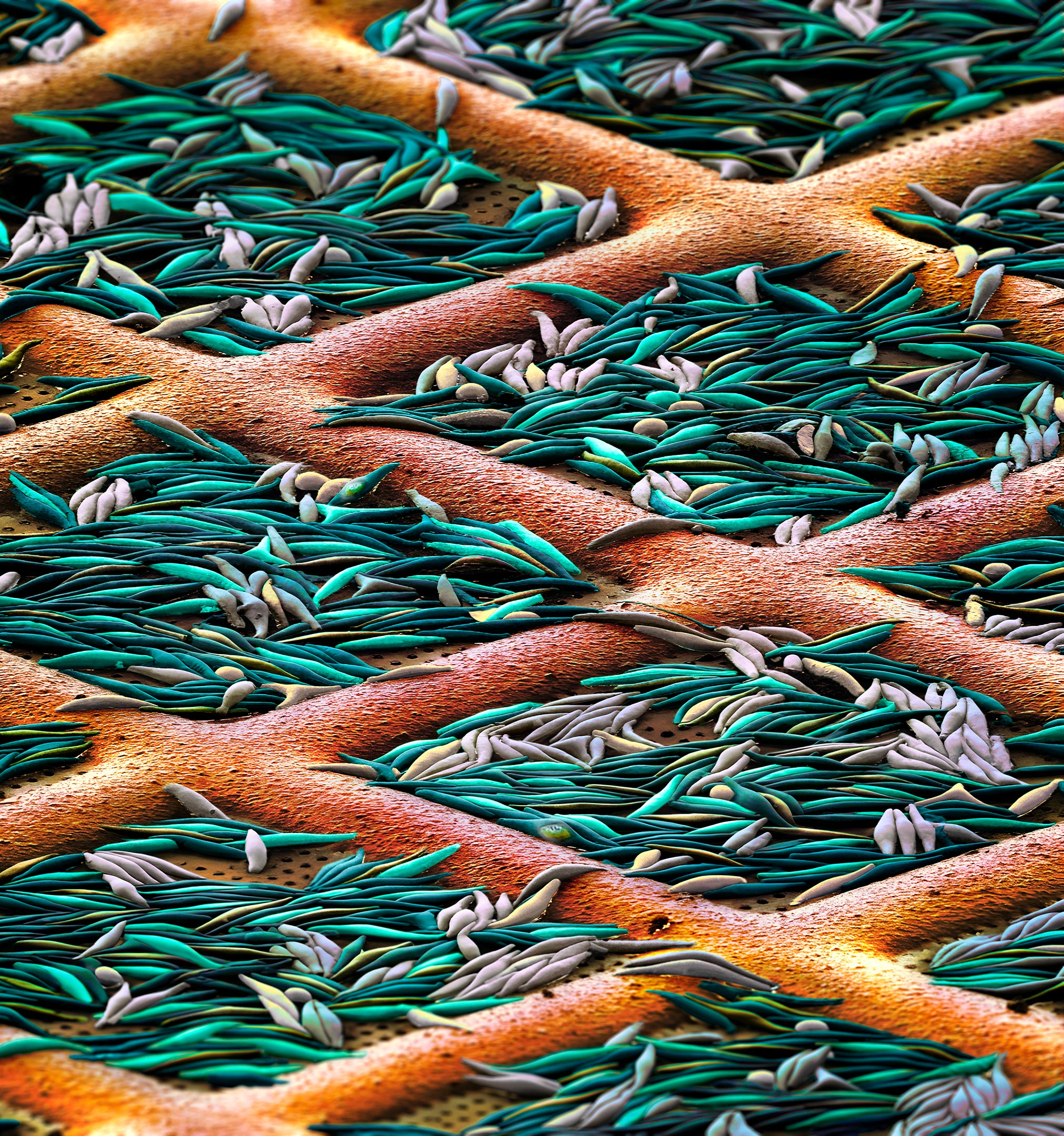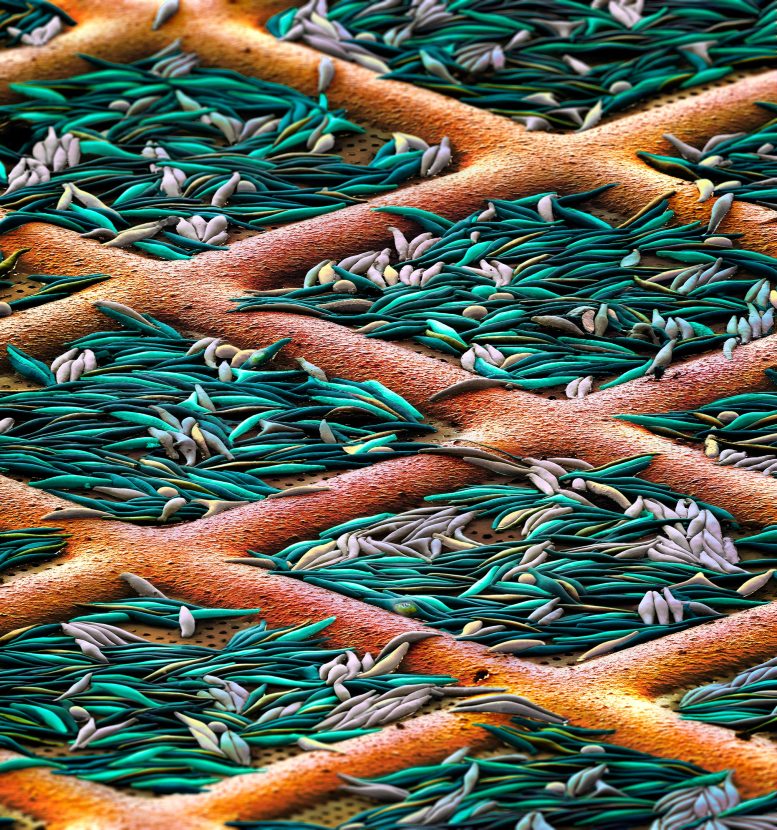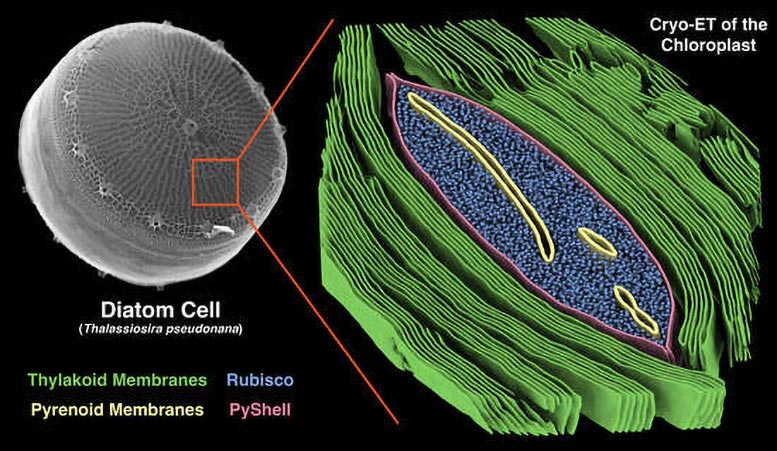

A groundbreaking study reveals a protein shell in diatoms that enhances their CO2 fixation capabilities, offering new avenues for bioengineering to combat climate change by optimizing photosynthesis.
Tiny ocean diatoms are highly efficient at capturing carbon dioxide (CO2) from the environment, accounting for up to 20 percent of the Earth’s CO2 fixation. Researchers at the University of Basel in Switzerland have now discovered a protein shell within these algae that is essential for their ability to fix CO2 so effectively. This significant finding could inspire new bioengineering strategies to help reduce atmospheric CO2 levels.
Diatom Discovery and Carbon Capture
Diatoms, though invisible to the naked eye, are among the most productive algae in the ocean and play a crucial role in the global carbon cycle. Through photosynthesis, they absorb large amounts of CO2 from the environment and convert it into nutrients that sustain much of ocean life. Despite their significance, how diatoms perform this process so efficiently has remained a mystery.
Now, researchers led by Prof. Ben Engel at the University of Basel’s Biozentrum, along with teams from the University of York, UK, and Kwansei-Gakuin University in Japan, have uncovered a protein shell crucial to diatoms’ CO2 fixation. Using advanced imaging techniques like cryo-electron tomography (cryo-ET), they mapped the molecular structure of the PyShell protein sheath and revealed its function. These findings were recently published in two papers in the journal Cell.

PyShell: A Key to Efficient Photosynthesis
In plants and algae, photosynthesis takes place in chloroplasts. Inside these chloroplasts, energy from sunlight is harvested by thylakoid membranes and then used to help the enzyme Rubisco fix CO2.
However, algae have an advantage: they pack all their Rubisco into small compartments called pyrenoids, where CO2 can be captured more efficiently. “We have now discovered that diatom pyrenoids are encased in a lattice-like protein shell,” says Dr. Manon Demulder, author on both studies. “The PyShell not only gives the pyrenoid its shape, but it helps create a high CO2 concentration in this compartment. This enables Rubisco to efficiently fix CO2 from the ocean and convert it into nutrients.”
When the researchers removed the PyShell from the algae, their ability to fix CO2 was significantly impaired. Photosynthesis and cell growth were reduced. “This showed us how important the PyShell is for efficient carbon capture – a process that is crucial for ocean life and the global climate,” says Manon Demulder.
Potential Climate Solutions Through Bioengineering
The discovery of the PyShell could also open promising avenues for biotechnological research aimed at combatting climate change – one of the most pressing challenges of our time. “First of all, we humans must reduce our CO2 emissions to slow the pace of climate change. This requires immediate action,” says Ben Engel.
“The CO2 that we emit now will remain in our atmosphere for thousands of years. We hope that discoveries such as the PyShell can help inspire new biotechnology applications that improve photosynthesis and capture more CO2 from the atmosphere. These are long-term goals, but given the irreversibility of CO2 emissions, it is important that we perform basic research now to create more opportunities for future carbon-capture innovations.”
Reference:
“Diatom pyrenoids are encased in a protein shell that enables efficient CO2 fixation” by Ginga Shimakawa, Manon Demulder, Serena Flori, Akihiro Kawamoto, Yoshinori Tsuji, Hermanus Nawaly, Atsuko Tanaka, Rei Tohda, Tadayoshi Ota, Hiroaki Matsui, Natsumi Morishima, Ryosuke Okubo, Wojciech Wietrzynski, Lorenz Lamm, Ricardo D. Righetto, Clarisse Uwizeye, Benoit Gallet, Pierre-Henri Jouneau, Christoph Gerle, Genji Kurisu, Giovanni Finazzi, Benjamin D. Engel and Yusuke Matsuda, 1 October 2024, Cell.
DOI: 10.1016/j.cell.2024.09.013
“A protein blueprint of the diatom CO2-fixing organelle” by Onyou Nam, Sabina Musiał, Manon Demulder, Caroline McKenzie, Adam Dowle, Matthew Dowson, James Barrett, James N. Blaza, Benjamin D. Engel and Luke C.M. Mackinder, 4 October 2024, Cell.
DOI: 10.1016/j.cell.2024.09.025